User-Generated Content Marketing: A Comprehensive Guide
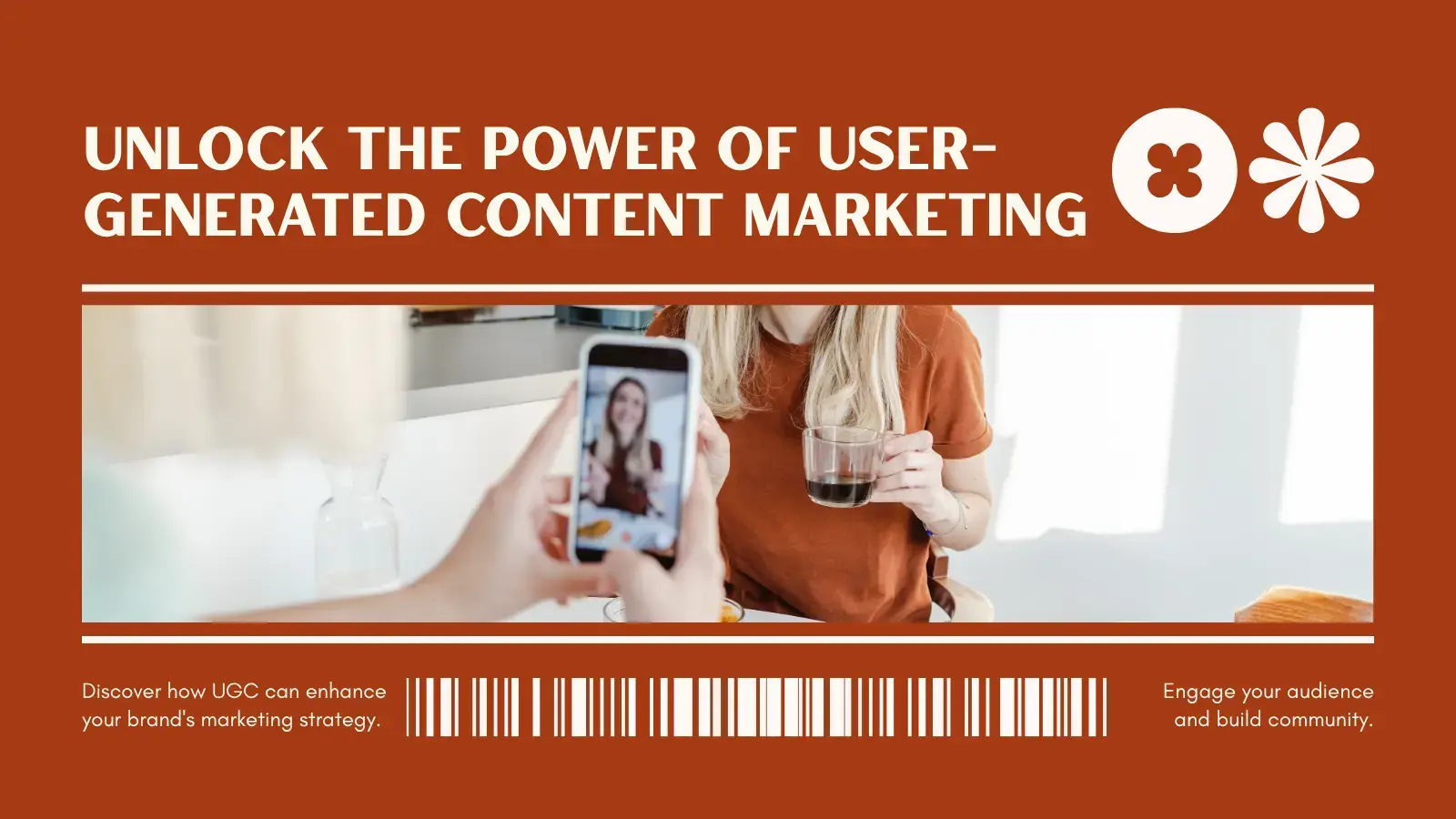
What is User-Generated Content Marketing?

Have you ever trusted a friend’s recommendation over a flashy commercial? UGC marketing involves leveraging content created by customers—such as reviews, social media posts, photos, videos, or blog comments—to promote a brand. Unlike traditional advertising, UGC feels authentic because it comes from real users, not marketers. Research suggests that 79% of consumers trust UGC more than brand-created content v (Stackla, 2021). Why do you think authenticity matters so much in marketing today?
UGC can take many forms:
- Social Media Posts: Customers sharing photos or videos of products on platforms like Instagram or TikTok.
- Reviews and Testimonials: Ratings or written feedback on sites like Amazon or Yelp.
- User Videos: Tutorials, unboxings, or vlogs featuring a brand’s products.
- Blog Comments or Forum Posts: Discussions on brand websites or community platforms.
For example, GoPro’s marketing heavily relies on user-submitted videos of adventures, showcasing the camera’s capabilities through real experiences. How might a customer’s video of using a product influence others compared to a professional ad?
Why is UGC Marketing Effective?
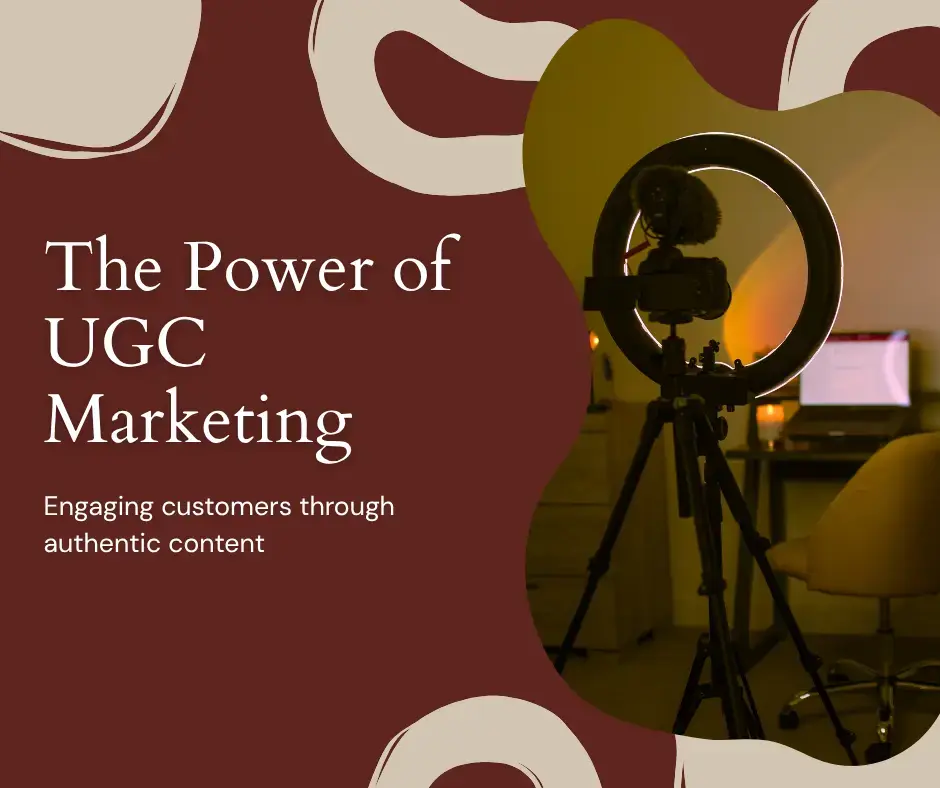
What makes a marketing campaign resonate with consumers? UGC’s effectiveness stems from its authenticity and relatability. Here are key reasons why it works:
- Builds Trust: Consumers are skeptical of polished ads. A 2023 study found that 90% of consumers trust peer recommendations over traditional advertising (Nielsen). How does seeing a real customer’s experience make you feel about a brand?
- Increases Engagement: UGC encourages interaction. For instance, Coca-Cola’s #ShareACoke campaign prompted users to post personalized bottle photos, generating millions of social media interactions.
- Cost-Effective: Since customers create the content, brands save on production costs. Have you considered how much a business might spend on professional ads versus leveraging free customer content?
- Enhances SEO: UGC like reviews or blog comments can improve search engine rankings by adding fresh, keyword-rich content. Why might search engines favor user content over static brand pages?
A case study from Airbnb shows UGC’s impact: user-hosted photos and reviews on their platform drive bookings by showcasing authentic travel experiences.
Types of User-Generated Content
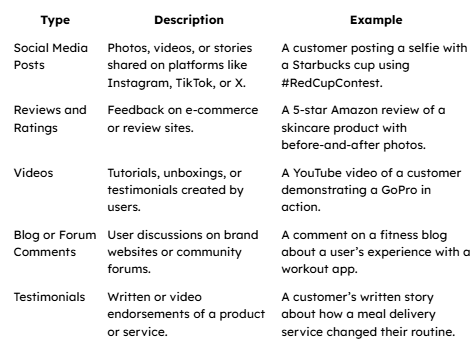
Benefits of UGC Marketing

Why would a business invest time in UGC? The benefits are numerous:
- Authenticity: UGC feels genuine, as it’s created by real users, not marketers. A 2024 report by Hootsuite found that 68% of consumers are more likely to purchase after seeing UGC (Hootsuite, 2024).
- Community Building: Encouraging UGC fosters a sense of belonging. For example, Lululemon’s #TheSweatLife campaign invites users to share fitness stories, creating a community around the brand.
- Increased Conversions: UGC can drive sales. A study by Bazaarvoice showed that products with UGC have a 12% higher conversion rate (Bazaarvoice, 2023).
- Scalability: UGC can be repurposed across channels—social media, websites, or ads—maximizing its reach.
Challenges of UGC Marketing
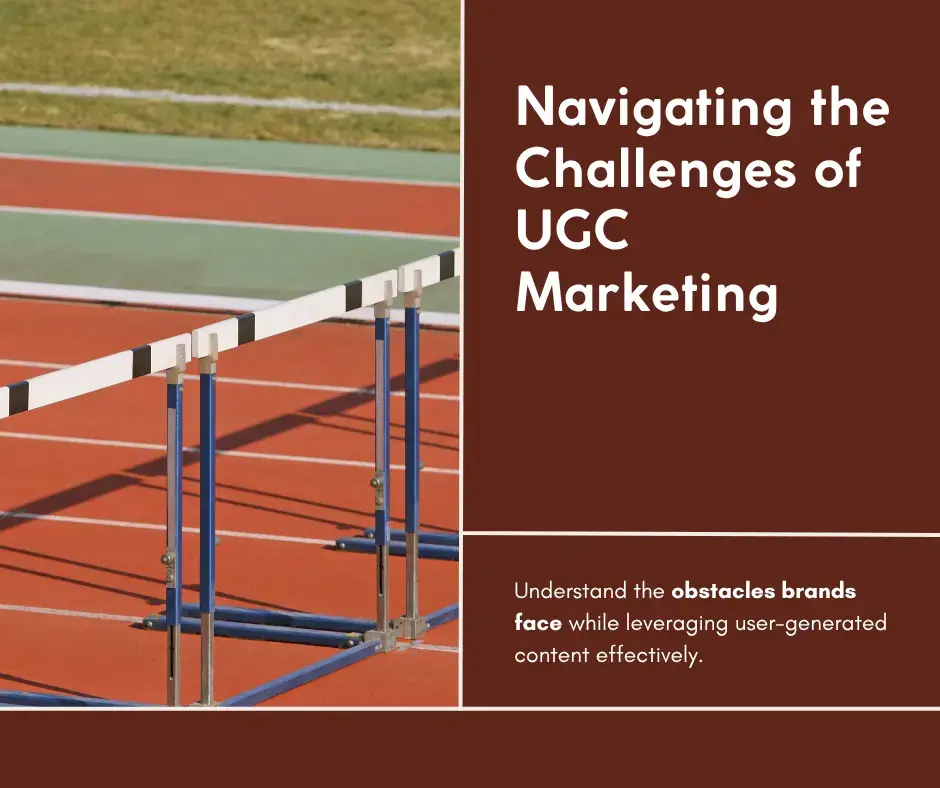
What could go wrong when relying on customer content? While powerful, UGC comes with challenges:
- Authenticity Concerns: Some brands face accusations of faking UGC. How would you ensure content is genuinely user-created?
- Negative Content: Customers may post critical reviews or inappropriate content. A 2022 study found that 30% of brands struggle with managing negative UGC (Sprout Social). How might a brand handle a negative review without losing trust?
- Legal Issues: Using UGC without permission can lead to copyright or privacy issues. Have you considered what permissions a brand needs to repost a customer’s photo?
- Moderation Needs: Brands must monitor UGC to ensure it aligns with their values, which can be time-consuming.
Strategies for Implementing UGC Marketing
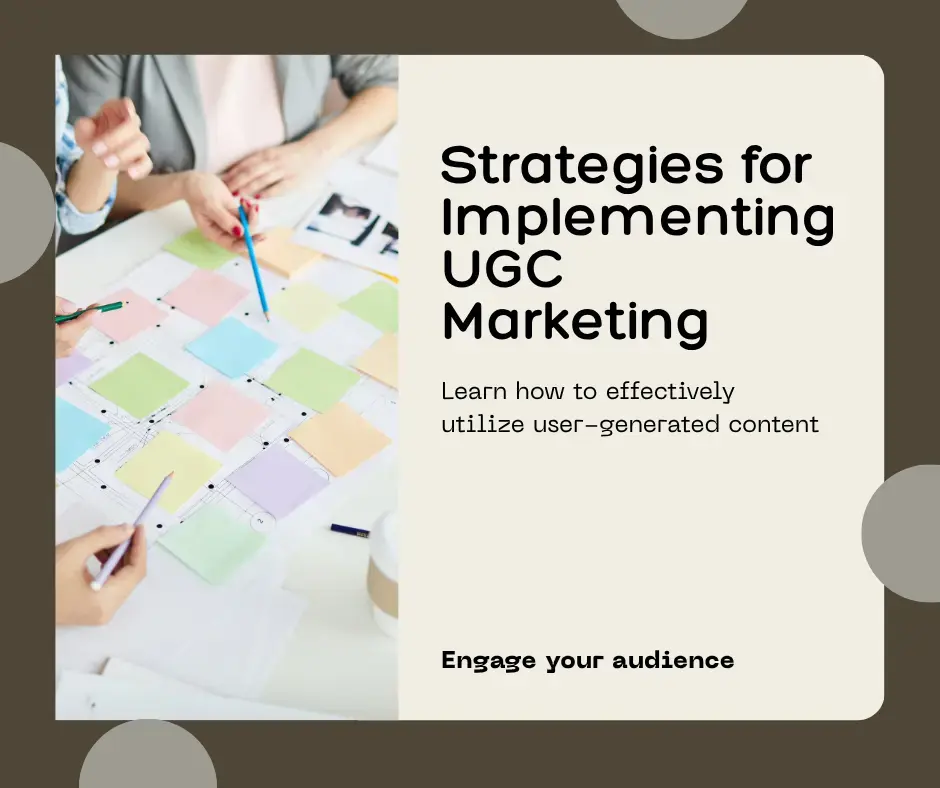
Strategies for Implementing UGC Marketing
How can a business encourage customers to create and share content? Here are proven strategies:
- Create Campaigns with Hashtags: Encourage users to share content with branded hashtags, like Starbucks’ #RedCupContest. Why do you think hashtags make it easier for brands to find UGC?
- Run Contests or Challenges: Offer incentives like discounts or prizes. For instance, Adobe’s #AdobePerspective campaign rewarded users for sharing creative projects.
- Feature UGC on Brand Channels: Repost customer content on your website or social media, giving credit to the creator. This builds trust and encourages more submissions.
- Use Tools for Tracking: Platforms like TINT or Yotpo help collect and curate UGC. How might these tools save time for a small business?
- Engage with Contributors: Respond to UGC with comments or likes to show appreciation. Why might this encourage more customers to participate?
Conclusion
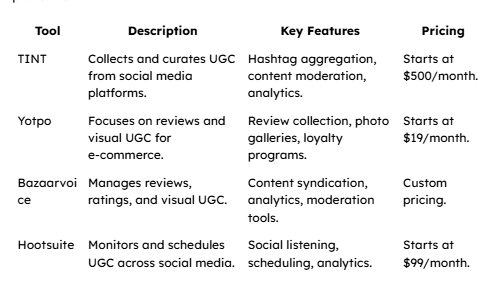
Founder & CEO @ Hubxpert. My goal is to make every company using HubSpot succeed in their marketing organisation and automation.

Ratul Rahman
Table of Contents:
Subscribe to our newsletter

HubSpot: Elevating Bangladeshi Consultancies Beyond Excel
Our 2024 Beginner's Guide to Revenue Attribution Models explains key models & helps you choose the right one to optimize campaigns & boost ROI.

Why Bangladeshi Consultancies Lose 30% of Leads—and How to Fix It
Our 2024 Beginner's Guide to Revenue Attribution Models explains key models & helps you choose the right one to optimize campaigns & boost ROI.

Bangladeshi Study-Abroad Marketing: Converting Social Media into Leads
Our 2024 Beginner's Guide to Revenue Attribution Models explains key models & helps you choose the right one to optimize campaigns & boost ROI.

Best CRM for Education Businesses in Bangladesh
Our 2024 Beginner's Guide to Revenue Attribution Models explains key models & helps you choose the right one to optimize campaigns & boost ROI.

Modern Sales Systems That Actually Convert for Bangladeshi Consultancies
Our 2024 Beginner's Guide to Revenue Attribution Models explains key models & helps you choose the right one to optimize campaigns & boost ROI.

What I Learned Helping Healthcare Businesses Fix Their Sales & Marketing Process
Discover how connected CRM systems like HubSpot can transform healthcare sales and marketing processes, improving patient engagement, reducing no-shows, and streamlining workflows.
-

HubSpot: Elevating Bangladeshi Consultancies Beyond Excel
Discover how businesses are using HubSpot to streamline marketing efforts, boost lead generation, and drive sustainable growth through data-driven strategies.
Marketing -

Why Bangladeshi Consultancies Lose 30% of Leads—and How to Fix It
Discover how businesses are using HubSpot to streamline marketing efforts, boost lead generation, and drive sustainable growth through data-driven strategies.
Marketing -

Bangladeshi Study-Abroad Marketing: Converting Social Media into Leads
Discover how businesses are using HubSpot to streamline marketing efforts, boost lead generation, and drive sustainable growth through data-driven strategies.
Marketing -

Best CRM for Education Businesses in Bangladesh
Discover how businesses are using HubSpot to streamline marketing efforts, boost lead generation, and drive sustainable growth through data-driven strategies.
Marketing -

Modern Sales Systems That Actually Convert for Bangladeshi Consultancies
Discover how businesses are using HubSpot to streamline marketing efforts, boost lead generation, and drive sustainable growth through data-driven strategies.
Marketing -

What I Learned Helping Healthcare Businesses Fix Their Sales & Marketing Process
Discover how businesses are using HubSpot to streamline marketing efforts, boost lead generation, and drive sustainable growth through data-driven strategies.
General




